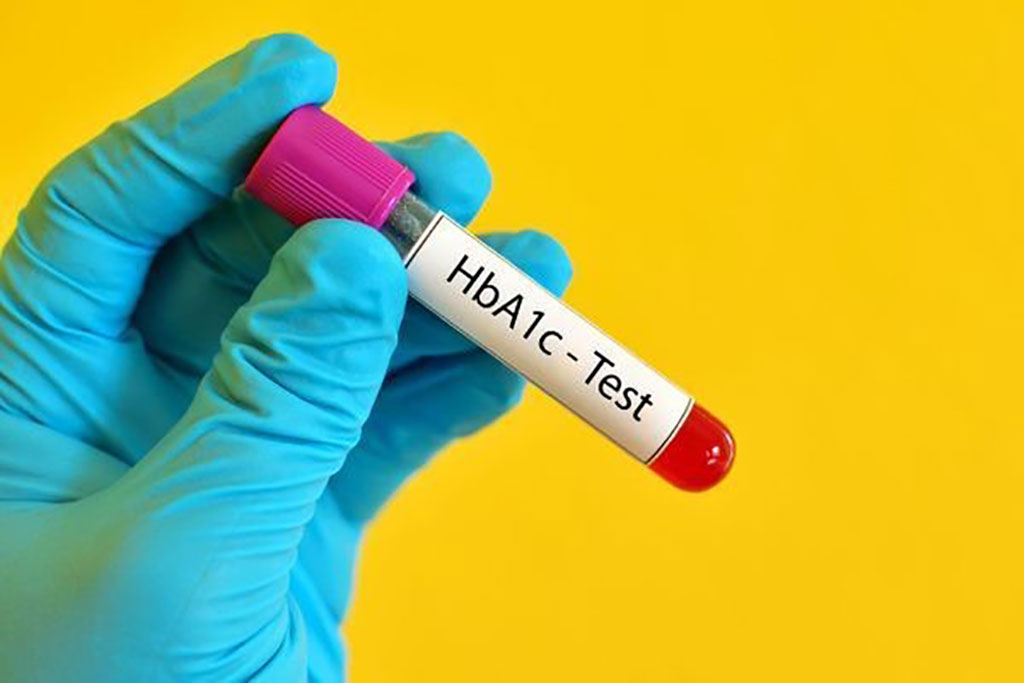Glycosylated Hemoglobin Predicts Coronary Artery Disease in Non‐Diabetic Patients
By LabMedica International staff writers
Posted on 27 Oct 2020
Coronary artery disease (CAD) is one of the leading causes of morbidity and mortality worldwide. CAD remains as a leading reason for heart failure causing disability and not only outcomes in the need for life‐long therapies, but also causes sudden death with acute myocardial infarction.Posted on 27 Oct 2020
Diabetes mellitus is a common metabolic disorder characterized by absolute or relative deficiencies in insulin secretion and/or insulin action associated with chronic hyperglycemia and with an increased risk of microvascular and macrovascular disease. Glycosylated hemoglobin (HbA1c) is a marker of three‐month blood sugar levels. Long‐term high blood sugar levels have been shown to pose a risk of cardiovascular disease.

Image: Glycosylated Hemoglobin (HbA1c) Predicts Coronary Artery Disease in Non‐Diabetic Patients (Photo courtesy of Diabnext).
Medical scientists at the Bezmialem Vakif University (Istanbul, Turkey) included in a study 247 patients without diabetes type 2 who were admitted to the outpatient clinic of the Cardiology department from January 2016 to June 2018 in a university hospital. Of the 247 cases whose 41.7% were women. The ages of the patients ranged from 33 to 87 years with a mean age of 60 ± 10.9 years. The non‐diabetic patients with HbA1c value below 6.5% who underwent elective coronary angiography (CAG) with various indications were included in the study.
In addition to obtaining HbA1c results of all patients included in the study, other biochemical tests performed before angiography including high‐density lipoprotein (HDL), low‐density lipoprotein (LDL), triglyceride (TG), liver function tests (AST, ALT), and electrolytes (Na, K, Ca). Demographic characteristics and known chronic diseases were investigated by face‐to‐face interviews. Of the study group, 120 patients were without any stenosis in any coronary artery, 56 patients were with >50% stenosis in one coronary artery, and 71 patients were with >50% stenosis in more than one coronary artery.
The scientists reported that in their study, HbA1c measurements ranged from 4.48% to 6.49% (5.7% ± 0.54) in whole study group and were lower than 5.69% among 44.5% (n = 110) of the cases, and however, it was between 5.7% and 6.5% in 55.5%. Stenosis positive ratio was found to be significantly higher in cases with HbA1c level of 5.7%‐6.5% than those with HbA1c level of less than 5.69%. HbA1c level 5.7%‐6.5% significantly increases the risk of stenosis. The odd ratio for HbA1c was 6.260. According to the stenosis positivity, the cutoff point for HbA1c was found to be 5.6% and above. In the regression analysis, HbA1c was an independent risk factor for CAD. One unit increase in HbA1c level increases the risk of stenosis up to 12.4‐fold.
The authors concluded that their study showed HbA1c can be used as an independent marker in determining the probability and severity of coronary artery disease in non‐diabetic individuals and as a useful marker in primary care predicting CAD. The study was published on October 9, 2020 in the Journal of Clinical Laboratory Analysis.
Related Links:
Bezmialem Vakif University












.jpg)
